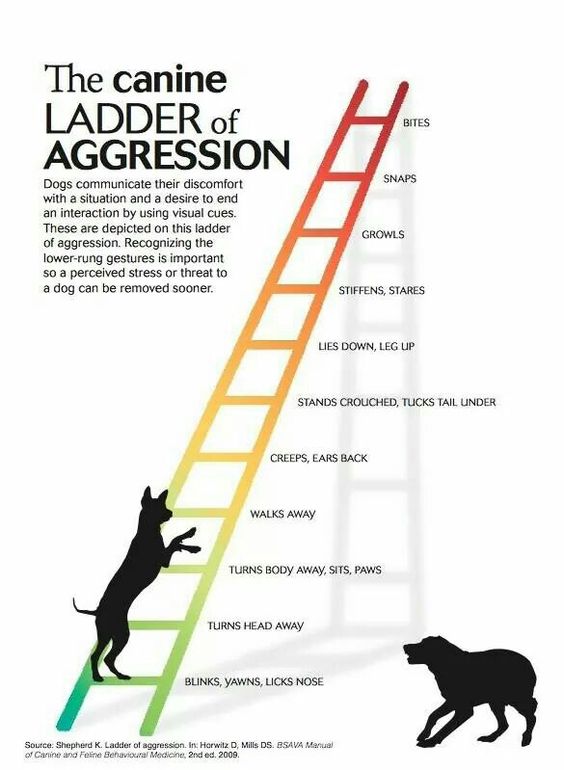As pet professionals, contractors with Dog Adventures Northwest must be aware of best practices for greeting dogs and preventing dog bites. Much of the common “wisdom” for meeting new dogs — such as offering the dog your hand to sniff while leaning towards or over them — is in fact unsafe. Instead, when meeting a new dog in their home, set yourself up for success right away by using these tips.
General Guidance
- Find out in advance if the dog has food allergies, and bring appropriate treats.
It’s recommended to purchase a bag of high-value treats with a novel protein such as duck, fish, venison, or rabbit to avoid allergens. - Text or call the clients rather than knocking on the door or ringing the doorbell.
Many dogs are agitated or stressed by a new person knocking at the front door. Let people know you’ve arrived by phone to increase the chance of a calmer dog and an easier first meeting. - When sharing space with a new dog, stand at an angle to them and do not hold eye contact.
Directly facing or standing over a dog with eye contact can feel very threatening or scary to a fearful or reactive dog. Chatting with the client while tossing treats and otherwise ignoring the dog is recommended. - Toss treats.
If a dog is motivated to approach by your treats, they may get closer to you, but feel very uncomfortable while doing so, which can increase stress and the potential of reactive behavior. Always toss treats to the dog’s general area. Do not ever deliver treats to an unknown dog’s mouth, or attempt to lure a dog closer with treats. - Let dogs approach you when they are ready.
Do not put out a hand to the dog. Let the dog approach and sniff when they are ready. - Pet responsibly.
Only pet a dog if they are showing overt signs that they would like physical contact, such as confidently approaching, gently nosing your hands, a slow and loosely wagging tail, soft eyes, and relaxed body posture. When you pet a dog, never pet them on the top of their head, as this can feel threatening and scary to a fearful or reactive dog. Start with your hand below the dog’s head and, if the dog is calm and happy, pet the side or underside of their head and neck (or their side or rear end, if that is what is offered by the dog). - Give breaks to ask for consent.
Sometimes dogs are done interacting with us before we stop petting them, so it’s a good idea to do consent testing with dogs to make sure everyone is on the same page. Not only does this help prevent bite incidents before they happen, it can also lead to a better relationship between you and the dog. Here is a video of what consent testing looks like. Also consider giving breaks in treat-tossing to take the pressure off of the dog who may not want to interact. - Don’t linger in the entryway.
Once a dog is comfortable with your presence, suggest that the clients lead the way to the family room or fenced back yard.
Dog Body Language and Stress Levels
It’s essential to be familiar with body language that might indicate a dog is feeling stressed or anxious. iSpeakDog has a picture gallery to help you become more comfortable identifying body language. Lili Chin’s book Doggie Language is also a useful guide. And if a dog is showing signs of stress, the Ladder of Aggression graphic below can help you to categorize their stress level.

Be a Tree
If you meet a new dog and they show you significant signs of stress or reactivity like growling, barking, or lunging, “be a tree” by turning slightly away, averting eye contact, lowering your head, and bringing your arms to your side.
Unless you are a trainer with experience in animal aggression, you should then request that the owner remove the dog from the room. Many dog parents feel embarrassed when their dog displays reactive behavior, and may try to scold their dog while attempting to manage them. Try to limit these attempts by saying “Your dog is being a really great communicator by letting us know they do not feel safe. That’s great! Let’s give them some space so that they don’t feel threatened.”
If you are on the trail and an unleashed dog attacks one of the dogs in your group at a low- to medium-level of aggression, a good tool to use is PetSafe’s Spray Shield, a harmless citronella-based animal deterrent that serves as a safe interruptor of aggressive behavior. In the case of high-level aggression, pepper spray is the best option (or, the threat of pepper spray to encourage a stranger to leash up their dog quickly). Please take a l0ok at Michael Shikashio's (free!) online video: When Shit Hits the Fan: Emergency Defensive Dog Handling. Though these occurrences are rare, it's best to be prepared.
Dog Adventures Northwest always prioritizes the health and wellbeing of its contractors. If you ever feel unsafe in a situation, follow your gut and do not hesitate to extract yourself from the situation in a safe way. We can always deal with human communication later; of most pressing concern is your safety in the moment, even if that creates an awkward situation. In the case of an unexpected trail altercation with an unknown person or unknown dog, please prioritize your own safety before the dog's and do your best to de-escalate heated interactions.
For a great or a visual example of the dos and don’ts of greeting a dog, please also check out this video from Instinct Dog Behavior.
